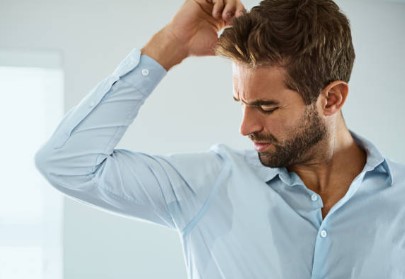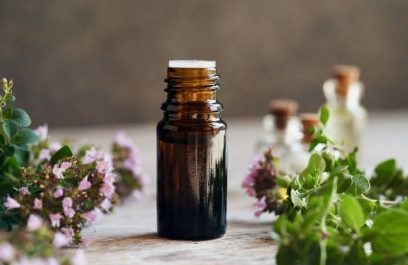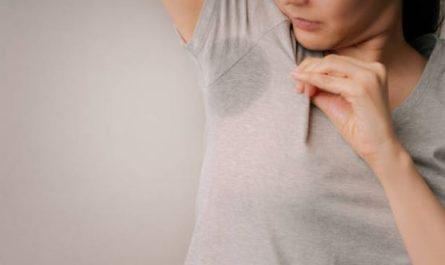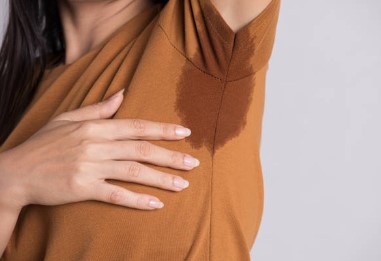There are various creams and lotions that can help manage underarm odor by targeting the underlying causes. These products often fall under the category of antiperspirants or deodorants, which are designed to reduce sweat production or mask odor.
When selecting an underarm odor management cream, you may want to look for products that offer long-lasting odor protection and contain ingredients like:
Aluminum compounds
These are commonly found in antiperspirants and help reduce sweat production.
Antibacterial agents
Look for creams that contain ingredients like triclosan, benzoyl peroxide, or tea tree oil, as they can help kill odor-causing bacteria.
Fragrance
Some creams may include pleasant fragrances to mask or neutralize the underarm odor.
It’s important to note that individual preferences and reactions to these products can vary. Some people may have sensitivities or allergies to certain ingredients, so it’s advisable to patch test a small area of your skin before applying any new product to your underarms. Additionally, if you have persistent or severe underarm odor concerns, it’s recommended to consult with a healthcare professional or dermatologist for further evaluation and personalized recommendations. They can provide guidance on the most suitable products or treatments based on your specific needs.
Example of Aluminum compounds for underarm smell
Aluminum compounds are commonly used in antiperspirant products to help reduce sweat production and control underarm odor. Here are a few examples of aluminum compounds you may find in antiperspirants:
Aluminum chloride
This compound is one of the most common active ingredients in antiperspirants. It works by forming a temporary plug in the sweat ducts, reducing the flow of sweat to the skin’s surface.
Aluminum chlorohydrate
Similar to aluminum chloride, aluminum chlorohydrate is effective in reducing sweat production. It forms a gel-like substance when applied to the skin, creating a barrier that helps control sweat and odor.
Aluminum zirconium tetrachlorohydrex gly
This compound is another commonly used active ingredient in antiperspirants. It offers long-lasting protection against sweat and odor by inhibiting sweat gland activity.
These aluminum compounds are often combined with other ingredients, such as fragrances, moisturizers, and skin conditioners, to provide a more pleasant application experience and additional benefits for the skin.
It’s important to note that some individuals may have sensitivities or allergies to aluminum compounds. If you have any concerns or reactions related to the use of antiperspirants containing aluminum compounds, it’s advisable to consult with a healthcare professional or dermatologist for further guidance.
Example of Antibacterial agents cream for underarm smell
There are several antibacterial agents that may be found in creams or products designed to address underarm odor. Here are a few examples:
Triclosan is an antibacterial agent commonly used in personal care products, including antiperspirants and deodorants. It helps kill odor-causing bacteria on the skin’s surface, reducing underarm odor.
While benzoyl peroxide is primarily used to treat acne, it also possesses antibacterial properties. Some creams or gels containing benzoyl peroxide can be applied to the underarm area to target bacteria and help control odor.
PanOxyl Antimicrobial Hydrating Acne Creamy Wash, 4% Benzoyl Peroxide, 6 Ounce
Tea tree oil
Tea tree oil is a natural antibacterial agent known for its ability to combat bacteria and fungi. Creams or lotions containing tea tree oil can be used to reduce underarm odor caused by bacteria.
These are just a few examples of antibacterial agents that may be used in creams or products targeting underarm odor. It’s important to read the product labels and ingredient lists to identify specific antibacterial agents contained in the creams you consider using.
If you have persistent or severe underarm odor concerns, it’s recommended to consult with a healthcare professional or dermatologist. They can evaluate your situation, provide a proper diagnosis, and offer targeted treatment options or recommendations based on your specific needs.
Symptoms of Underarm Smell
The primary symptom of underarm smell, also known as axillary odor or body odor, is the unpleasant scent that emanates from the underarm area. The smell can vary in intensity and may be described as pungent, musty, or sour. Underarm odor is typically more noticeable when sweat mixes with bacteria on the skin’s surface.
Other symptoms or factors associated with underarm smell may include:
Increased sweat production – People with underarm smell may experience excessive sweating, known as hyperhidrosis, in the underarm area. This can contribute to the development of body odor.
Wetness or dampness – Along with the odor, the underarm area may feel consistently moist or damp due to increased perspiration.
Discoloration or staining – In some cases, prolonged underarm odor can lead to yellowish discoloration or staining of clothing in the underarm area.
It’s important to note that underarm odor can vary from person to person and can be influenced by factors such as diet, personal hygiene habits, hormonal changes, and genetics. While underarm smell is common and often manageable with proper hygiene practices and the use of antiperspirants or deodorants, persistent or severe odor concerns should be discussed with a healthcare professional or dermatologist for further evaluation and guidance.









